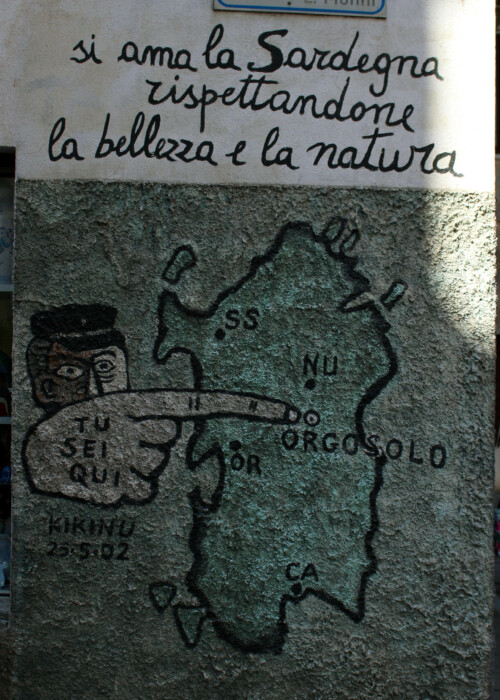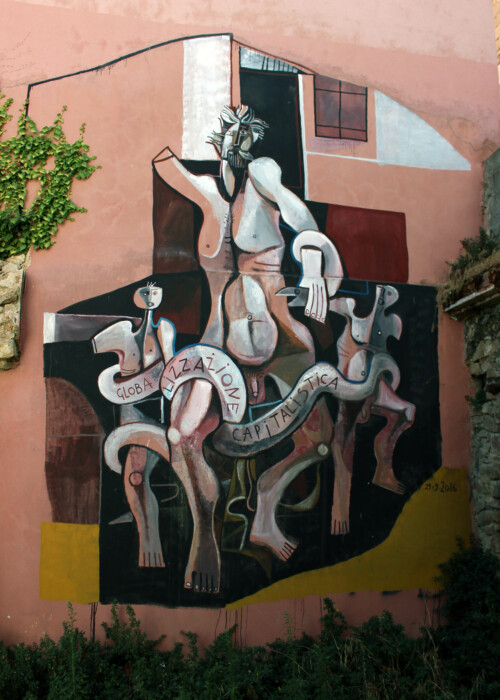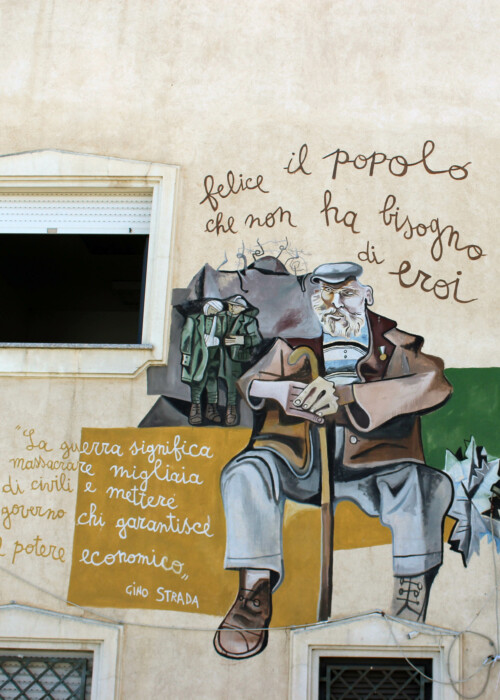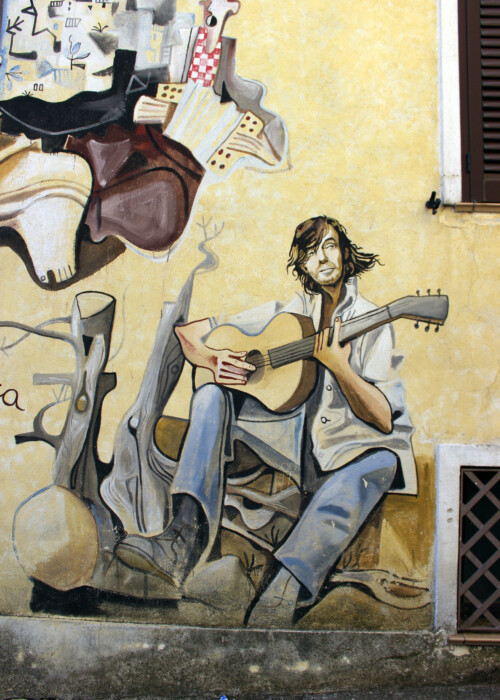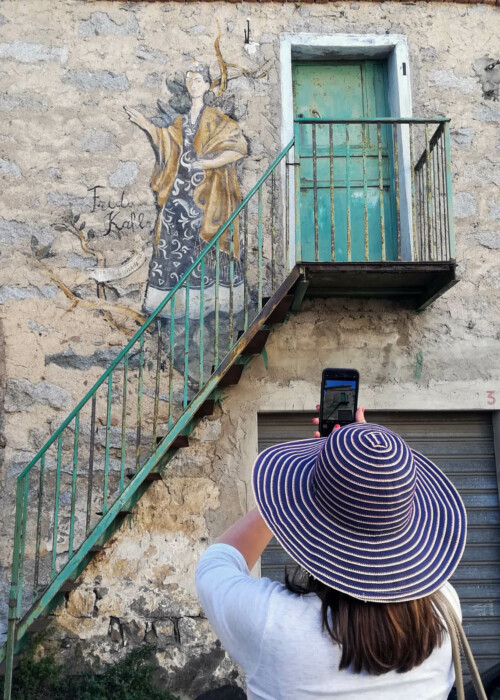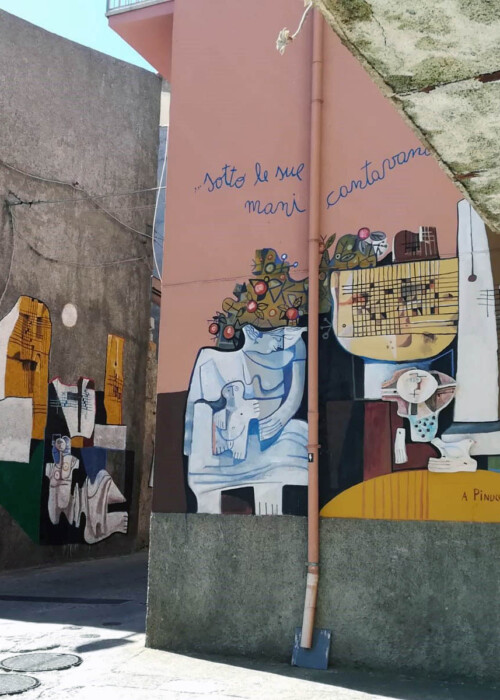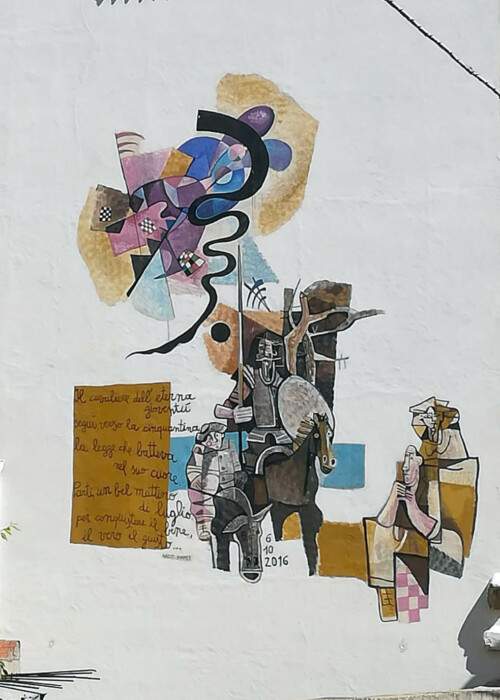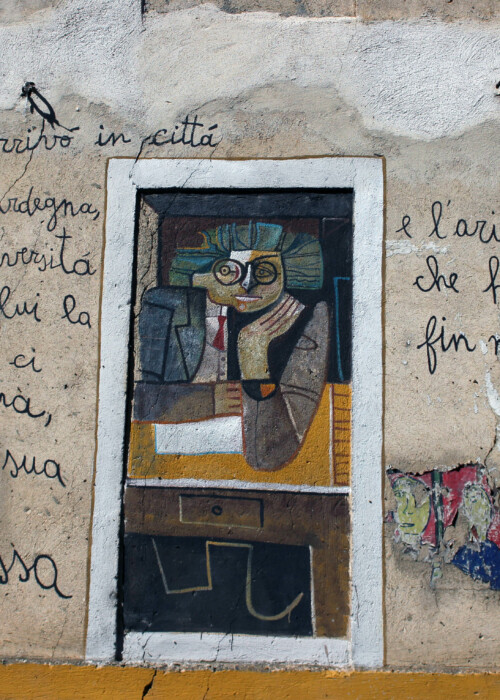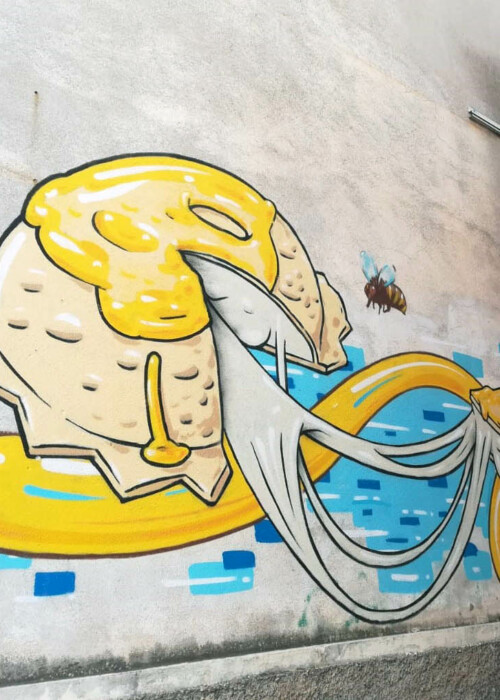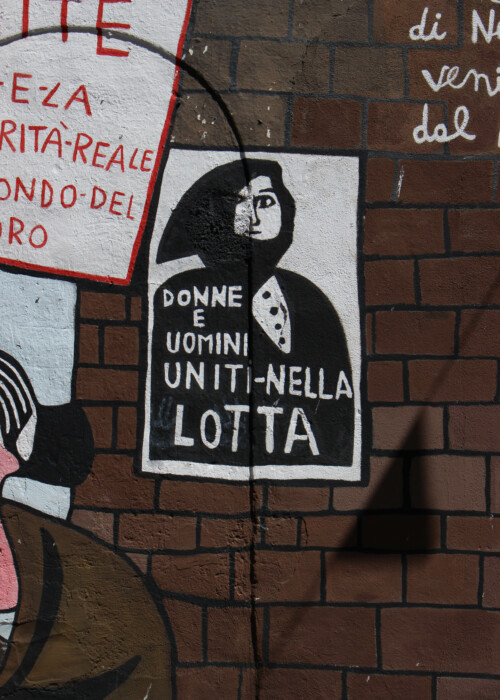ita | eng
Walking the streets of Orgosolo, a small town on the Supramonte in the heart of Sardinia, is a constant discovery. What you learn by walking the tortuous little streets of the town is that art is one the strongest forms of communication, effective in keeping memories, conveying knowledge, and remembering protests.
The art of murals has deep roots. Some of the most famous artists in this field are, without a doubt, the Mexican maestros José Clemente Orozco, Diego Rivera and David Alfaro Siqueiros in whose work we can relive the atrocities of the Mexican Revolution, the working class protests, and the messages and political ideologies of their time. In Italy Mario Sironi, with Manifesto on Mural Paintings (1933), praised the artistic and communicative qualities of this form of art; he explained how this instrument could “educate the masses” during fascism. This simple form of art, able to speak to the masses in a direct and clear manner, survived the destruction caused by conflicts and flourished with new meanings after the second world war.
In the 60s and 70s Sardinia became a home, of sorts, to the art of murals. In 1968, in San Sperate, Pinuccio Sciola“returning from the stimulating study experience at the University of Moncloa in Madrid, proposed that the walls of his small hometown be covered in white lime so that huge murals could be painted on them. Strong hands and friendly arms started painting the streets, creating spaces that could host beauty; works of art born out of the collaboration of the whole community, in an action that has the shape of a collective art performance, a popular rite. The white surfaces became alive, recounting both political stories as well as daily life; many were the artist who left their mark in San Sperate, in the wake of the initiative promoted by the friend and master Pinuccio Sciola (read the article on Sciola here).”
Even in Orgosolo the walls talk. In this small town, hospitality is key, and the colours of nature blend in with the (approximately) 150 beautiful murals which ornate the walls of houses and stores alike. Orgosolo is a museum-town: the first mural dates back to 1969, it was made by the anarchic group from Milan Dioniso; but the proliferating of the murals is all thanks to the intervention and dedication of Francesco del Casino who, from 1975 onwards, painted most of the towns’ murals.
On the town’s walls, there is space for different techniques: if you pay close attention, between the warnings to respect the environment and the precious teachings of history, you’ll find a cheese seada by the street artist Cibo.
Walking down the narrow alleys you’ll find tributes to the great masters of art: Frida Kahlo, Diego Rivera, Vasilij Kandinsky, and Pinuccio Sciola coexist a few feet apart, mingled with memories of the life of Antonio Gramsci, the poetical music of Fabrizio de Andrè. Again, the words of Grazia Deledda are mixed with memories of the working class struggle, of the women who died in the factory, of the fight for equal rights, and of the life of peasants. Some of the murals invite us not to forget the atrocities of war as well as the abuses which humankind has many a time perpetuated against nature and its kind. Other murals promote messages of peace and integration.
Browse the gallery:
Useful information on SardegnaTurismo
Photo credits: Fabio Ezio Solinas
Translated by Ludovica Sarti
Read other Curious Facts on ZìrArtmag
